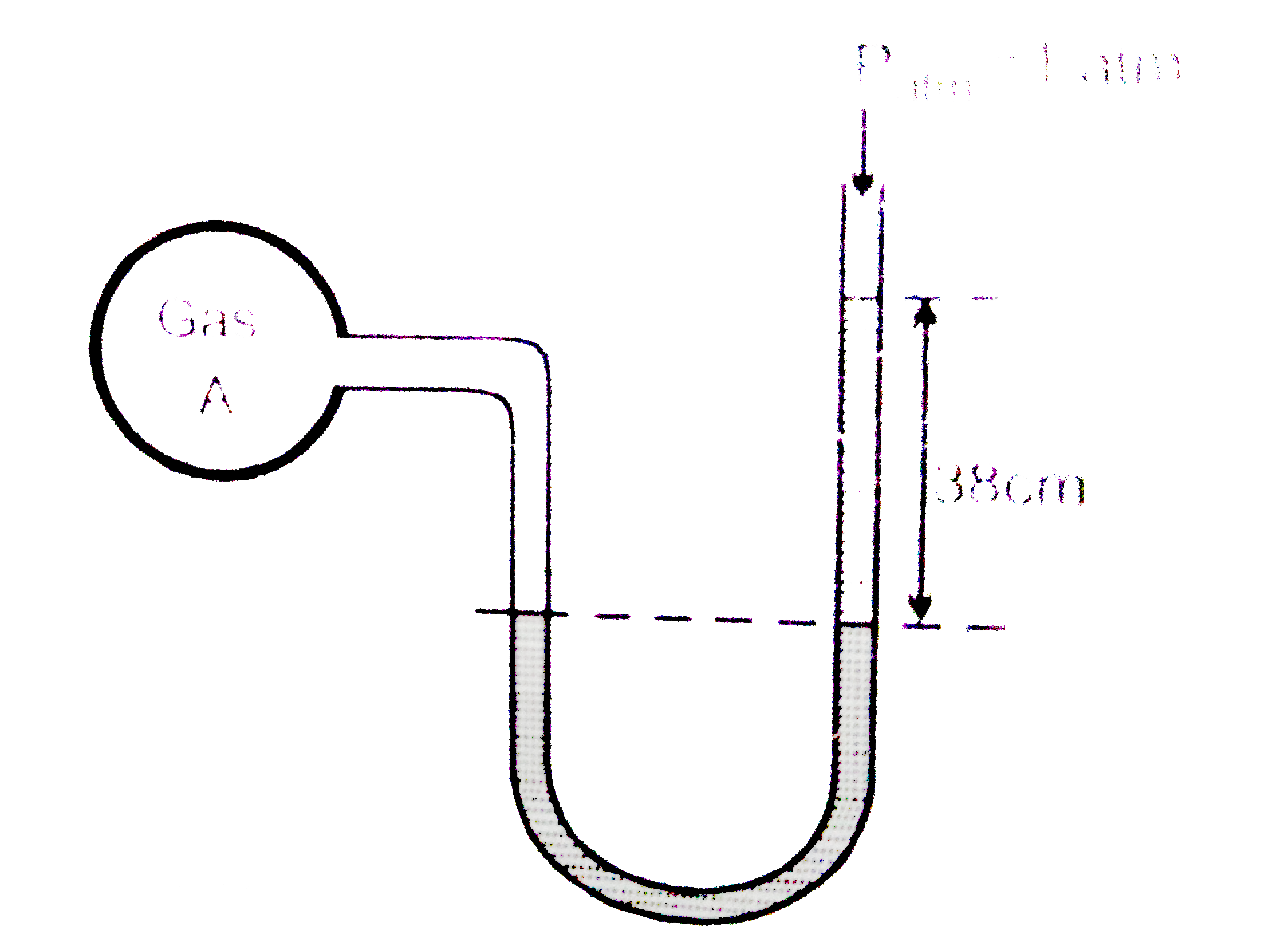A manometer attached to a flask contains with ammonia gas have no difference in mercury level initially as shown in diagram. After sparking into the flask, ammonia is partially dissociated as now it have difference of 6 cm in mercury level in two columns, what is partial pressure of at equilibrium?
 Solution in Telugu
Solution in Telugu
9 cm Hg
18 cm Hg
27 cm Hg
None of these
The correct Answer is:a
(a)
Increase in pressure
Partial pressure of
Topper's Solved these Questions
- GASEOUS STATEBOOK - NARENDRA AWASTHICHAPTER - GASEOUS STATEEXERCISE - Level 1 (Q.31 To Q.60)
1 Videos
- GASEOUS STATEBOOK - NARENDRA AWASTHICHAPTER - GASEOUS STATEEXERCISE - Level 1 (Q.121 To Q.150)
1 Videos
- ELECTROCHEMISTRYBOOK - NARENDRA AWASTHICHAPTER - ELECTROCHEMISTRYEXERCISE - Level 3 - Subjective Problems
1 Videos
- IONIC EEQUILIBRIUMBOOK - NARENDRA AWASTHICHAPTER - IONIC EEQUILIBRIUMEXERCISE - Assertin-Reason Type Questions
1 Videos
Similar Questions
Nitrogen forms several gaseous oxides. One of them has a density of 1.33 g/L measured 764 mmHg and 150∘C. Write the formula of the compound.
View SolutionDimethyl ether decomposes as
CH3OCH3(g)→CH4(g)+CO(g)+H2(g)
When CH3OCH3(g) decomposes to 20% extent under certain conditions, what is the ratio of diffusion of pure CH3OCH3(g) with methane?
View SolutionA solution containing 1MXSO4(aq) and 1MYSO4(aq) is electrolysed. If conc. Of X2+ is 10−zM when deposition Y2+ and X2+ starts simultaneously, calculate the value of Z.
Given: 2.303RTF=0.06
E∘x2+|X=−0.12V,E∘Y2+|Y=−0.24V
View SolutionSTATEMENT-1: All strong monoprotic acid with same concentration in dilute solution show same pH.
STATEMENT-2: Water shows levelling effect.
View SolutionFigure shows a manometer, one arm is connected with a bulb containing NH3 and other arm containing N2H4 both at initial pressure of 1 atm. Initially both arms of manometer contains liquid at same level, what will be difference in level of arms, when 50% NH3(g) and 75% N2H4(g) dissociates according to the given reaction. Assume temperature remains constant?

2NH3(g)→N2(g)+3H2(g)
N2H4(g)→N2(g)+2H2(g)
View SolutionThe partial pressure of hydrogen in a flask containing 2 g of H2 and 32 g of SO2 is
View SolutionA manometer attached to a flask contains with ammonia gas have no difference in mercury level initially as shown in diagram. After sparking into the flask, ammonia is partially dissociated as 2NH3 (g)→N2 (g)+3H2 (g) now it have difference of 6 cm in mercury level in two columns, what is partial pressure of H2 (g) at equilibrium?

View SolutionA monometer contains a liquid of density 5.44g/cm3 is attached to a flask containing gas 'A' as follows

If gas A undergoes30% trimerisation [3A(g)<⇒A3(g)] then the difference in height of the liquid level in two columns is:
View SolutionA manometer attached to a flask contains with ammonia gas have no difference in mercury level initially as shown in diagram. After sparking into the flask, ammonia is partially dissociated as 2NH3 (g)→N2 (g)+3H2 (g) now it have difference of 6 cm in mercury level in two columns, what is partial pressure of H2 (g) at equilibrium?

View SolutionFor the reaction N2(g)+3H2(g)→2NH3(g) the rate of the reaction in terms of ammonia is __________
View SolutionVapour density of the equilibrium mixture of the reaction
2NH3(g)⇔N2(g)+3H2(g) is 6.0 Percent dissociation of ammonia gas is :
View SolutionA manometer attached to a flask contains NH_(3) gas have no difference in mercury level initially as shown in diagram.After the sparking into the flask, it have difference of19 cm in mercury level in two columns.Calculate % dissciation of ammonia
View SolutionConsider the reaction N2(g)+3H2(g)→2NH3(g)
The equilibrium constant of the above reaction is Kp If pure ammonia is left to dissociated, the partial pressure of ammonia at equilibrium is given by : (Assume that PNH3<<P→tal at equilibrium)
View SolutionTwo moles of ammonia gas are introduced into a previously evacuated 1 L flask in which it partially dissociates at high temperature as :
2NH3(g)⇔N2(g)+3H2(g)
At equilibrium 1.0 mole of NH3(g) is found. What is Kc ?
View SolutionOne mole of N2 and 3 moles of H2 are mixed in a litre flask. If 50%N2 is converted into ammonia by the reaction.
N2(g)+3H2(g)⇔2NH3(g)
then the total number of moles of gas at equilibrium is :
View SolutionN2(g)+3H2(g)↔2NH3(g) is a gaseous phase equilibrium reaction taking place at 400K in a 5 L flask. For this
View Solution
